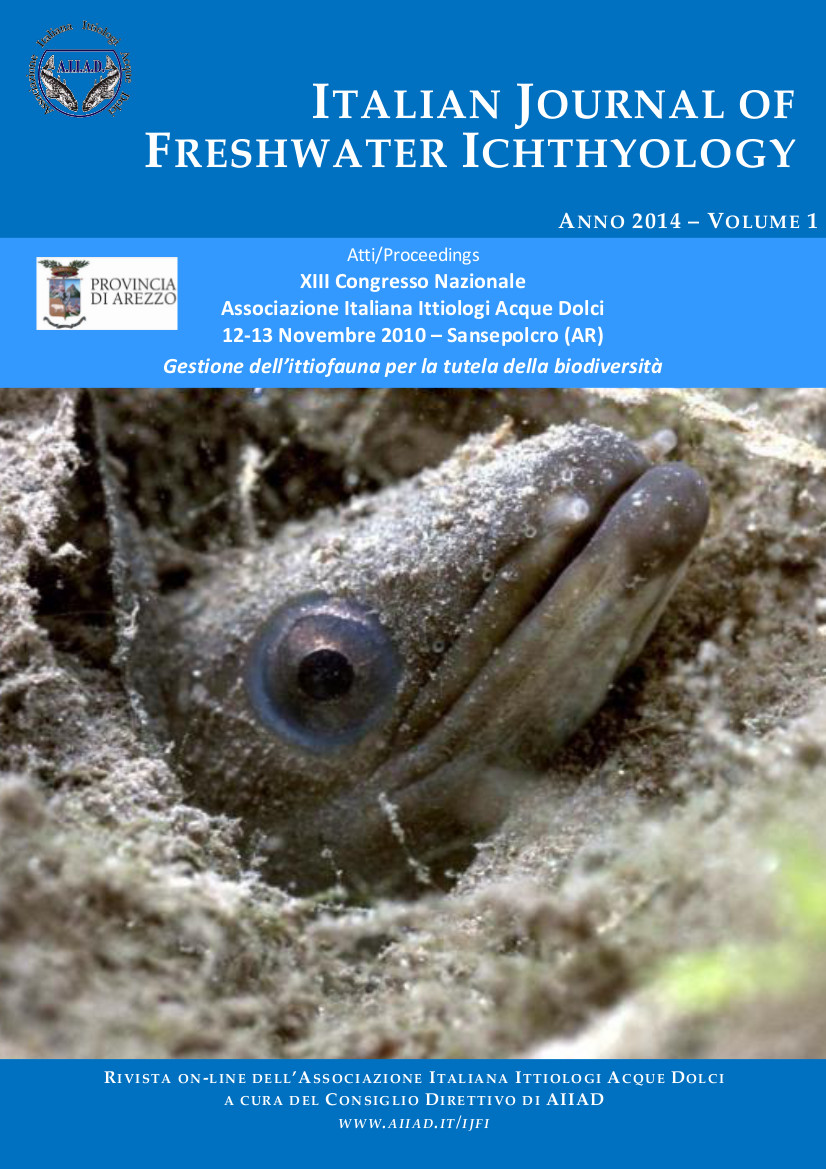Food adaptation of rainbow trout, Oncorhynchus mykiss (Walbaum, 1792), after introduction in environment - experimentation on River Piave -
Abstract
In the middle flow of river Piave in the province of Belluno (Italy) 700 Kg of rainbow trout Oncorhynchus mykiss (Walbaum, 1792) of the legal size of fishing was introduced in 2009 (Zanetti et al., 2009). In order to evaluate the possible impact of this action on the autochthonous populations, the feeding competition against the native Salmonids has been considered as a threatening factor. On this regard the stomach contents of 195 rainbow trouts have been analyzed, which had been taken by fishers of Basin number 10 “Acque Feltrine” in the same part of the river. The analysis of stomach contents has pointed out the presence of the only benthic macroinvertebrates in 83,1% of the cases analyzed. In addition, macroinvertebrates and fishes in 4,1% of the cases studied, vegetable material for 3,1% as well as macrophytes and macroinvertebrates in 1,5% have been found. The 8,2% of stomachs has resulted empty.
The feeding adaptation of rainbow trout has shown opportunist but it has also highlighted the preferences for specific taxa of macroinvertebrates.
The analysis has also revealed that the feeding adaptation is clear after the release in the environment; as a matter of fact, after one week already from such introduction, a great predation has been pointed out.


